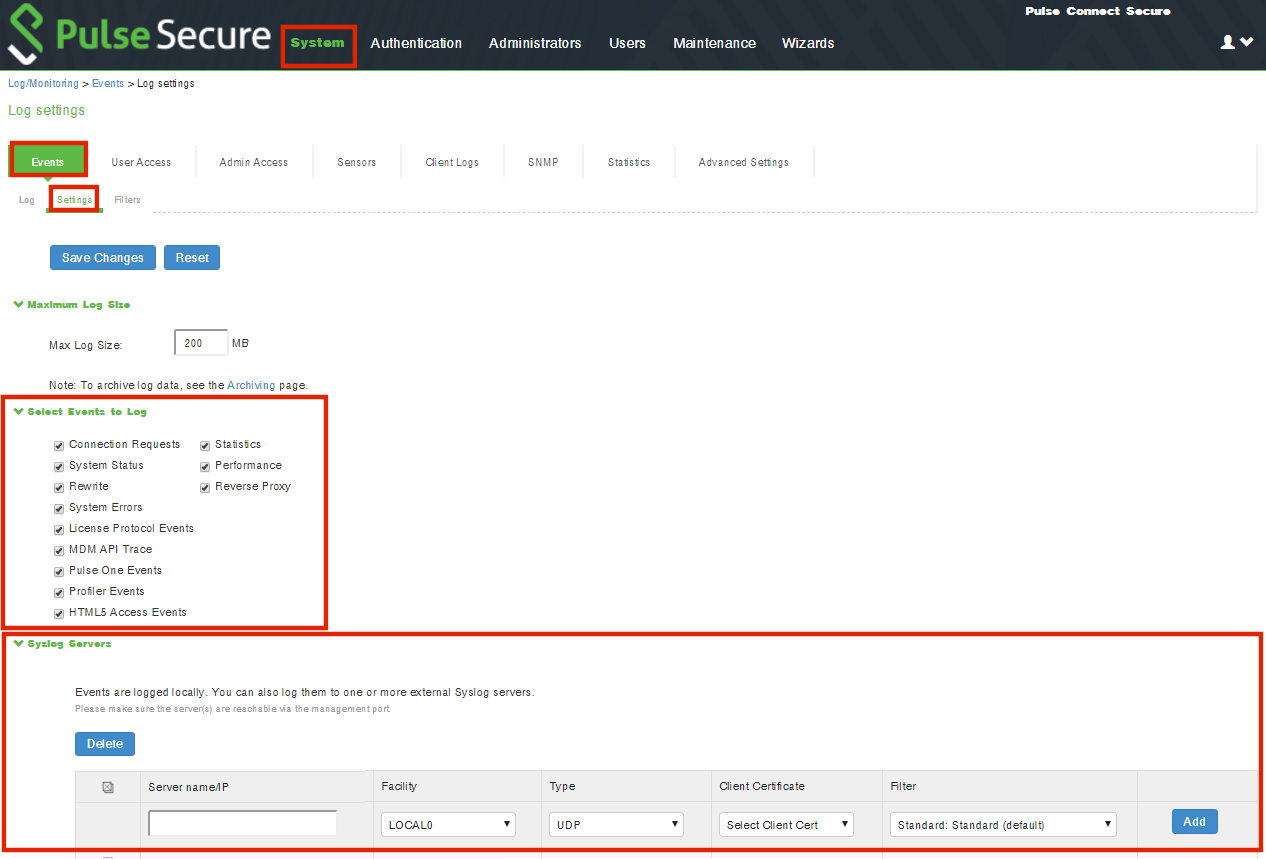Configuring Individual PCS/PPS Appliances
After you have configured Pulse One as a syslog server, you must perform the following steps on each PCS/PPS appliance that will use the syslog server:
1.Log into the PCS/PPS appliance.
2.Navigate to System > Log/Monitoring > Events > Settings.
3.Under Select Events to Log, select all options that need tracking. For example:

4.Under Syslog Servers:
•Server name/IP: Enter the FQDN or IP address of the Pulse One appliance.
•Facility: Select an option from the list. This will identify this log type.
To distinguish between different log types (Events, User Access, Admin Access), you must select a different Facility for each type.
•Type: Select TCP.
•Client Certificate: Select Select Client Cert.
•Filter: Select WELF: WELF
5.Click the Add button to add this external syslog server.
6.Click Save Changes to save the configuration.
7.Navigate to System > Log/Monitoring > User Access > Settings.
8.Under Syslog Servers:
•Server name/IP: Enter the FQDN or IP address of the Pulse One appliance.
•Facility: Select an option from the list. This will identify this log type.
To distinguish between different log types (Events, User Access, Admin Access), you must select a different Facility for each type.
•Type: Select TCP.
•Client Certificate: Select Select Client Cert.
•Filter: Select WELF: WELF
9.Navigate to System > Log/Monitoring > Admin Access > Settings.
10.Under Syslog Servers:
•Server name/IP: Enter the FQDN or IP address of the Pulse One appliance.
•Facility: Select an option from the list. This will identify this log type.
To distinguish between different log types (Events, User Access, Admin Access), you must select a different Facility for each type.
•Type: Select TCP.
•Client Certificate: Select Select Client Cert.
•Filter: Select WELF: WELF
11.Select the Advanced Settings tab and enable Fault Tolerance for the Pulse One syslog server.
Once you have performed this procedure for each PCS/PPS appliance, the Pulse One syslog server will accumulate logs from all appliances and log types.
If the data partition of the target system is full or reaches the disk-usage threshold, then the forwarded logs will not be stored. Follow the steps in Managing System Files and Settings to clear older logs.